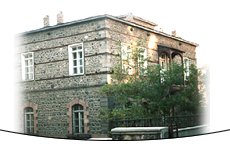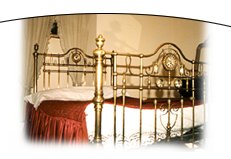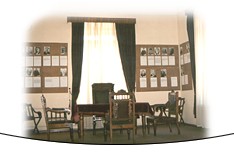Erzurum - Atatürk Museum
 The museum is situated on Caykara street, Caykara Avenue. It was built as a mansion by a wealthy man of Erzurum at the end of the XIX. Century. It was used as the German Consulate for 9 months in between 1915 - 1916 and after the liberation of Erzurum it was given to the governor of Erzurum as the residence on 12 March 1918. The governor Mahir Akkaya resided in this building until 3 July 1919 and it was vacated after his departure.
The museum is situated on Caykara street, Caykara Avenue. It was built as a mansion by a wealthy man of Erzurum at the end of the XIX. Century. It was used as the German Consulate for 9 months in between 1915 - 1916 and after the liberation of Erzurum it was given to the governor of Erzurum as the residence on 12 March 1918. The governor Mahir Akkaya resided in this building until 3 July 1919 and it was vacated after his departure.
The mansion earned its historical importance when Atatürk, Hüseyin Rauf Bey and his companions settled in on 9 July 1919 and worked on the Erzurum Congress preparations for 52 days, until 29 August 1919. After Atatürk’s departure it continued to be used as the Governor’s residence.
After the declaration of the Republic, when Atatürk arrived in Erzurum again on 13 September 1924, the mayor Nazif Bey, on behalf of the city, had presented him the golden key of the city made by a jeweller and the title of the mansion.
During the years 1930 - 1934 the mansion was assigned as residence to the commanders of the Erzurum Army Corps. After the death of Atatürk the mansion was inherited by his sister Makbule Boysan. According to the title records, after her death, as her wish, the mansion passed to Child Care Foundation on 12 October 1944. The building was used by this Foundation until 1980’s and on 8 May 1984 was transferred to the Ministry of Culture.
The building consisting of a basement, two-storeys and an attic was restored and opened to the visitors as the Atatürk Museum on 3 October 1984.
Ground Floor 
After the stone arched entrance, personal belongings, documents and photographs of Kazim Karabekir and Kazim Yurdalan are displayed in the room on the right. From that room you pass to another room where wearing apparel, weapons, photographs and documents of Raif Dinc, the president of the Defence of Rights National Association and the documents of Erzurum Congress are exhibited. In the room situated right across this room you can see the printing machine used for publishing the Turkish newspaper Envari Sarkiye, the unforgettable newspaper of the National Struggle period, Albayrak and the notices of Erzurum Congress.
First Floor
In the first floor at the stair hall you can see the big group photograph of Atatürk and his companions, taken during their second visit to Erzurum and, the armchairs and coffee tables used in those days. From the entry you pass to the hall and to the large room where the photographs of the members of the Erzurum Congress and biographies displayed. From there you can pass to the reception room and to the bedroom.
Erzurum - 23 July Congress Hall
The hall is situated in the Kongre (Congress) Square. It was built in the late XIX. Century.
July 23 Congress Hall building (Atatürk Building Trade High School) now serves as the Fine Arts High School.
 The 23 July Erzurum Congress had taken place in the hall of the High School’s first floor. In a fire in 1925 all the timber structure of the building was burned. It was repaired after the fire and opened to service as the Building Trade High School. A hall on the second floor and two rooms opening to that hall have been organized as the Congress Museum. The foundation of the republic was laid down at the Erzurum Congress with Atatürk as the congress president, and the path going to the Turkish Grand National Assembly was opened again in this congress. Therefore this building has a very important place in our Republic’s history.
The 23 July Erzurum Congress had taken place in the hall of the High School’s first floor. In a fire in 1925 all the timber structure of the building was burned. It was repaired after the fire and opened to service as the Building Trade High School. A hall on the second floor and two rooms opening to that hall have been organized as the Congress Museum. The foundation of the republic was laid down at the Erzurum Congress with Atatürk as the congress president, and the path going to the Turkish Grand National Assembly was opened again in this congress. Therefore this building has a very important place in our Republic’s history.
Having a special museum status within the Ministry of Education, this hall exhibits the photographs of the congress members, biographies, furniture from those days and congress documents.
The building, having a U shape plan, consists of a basement and two floors. The main entrance as the axis the building has a perfectly symmetrical plan. There are two more entrances beside the main entrance. When you go up to the first floor through the stairs you will see the congress hall in front of you. Right across, when you enter the hall, there is the statue of Atatürk, four rows of desks and a map showing from which provinces the delegates arrived are hanged on the walls. The small rooms at the sides of the hall still display the furniture of those days.